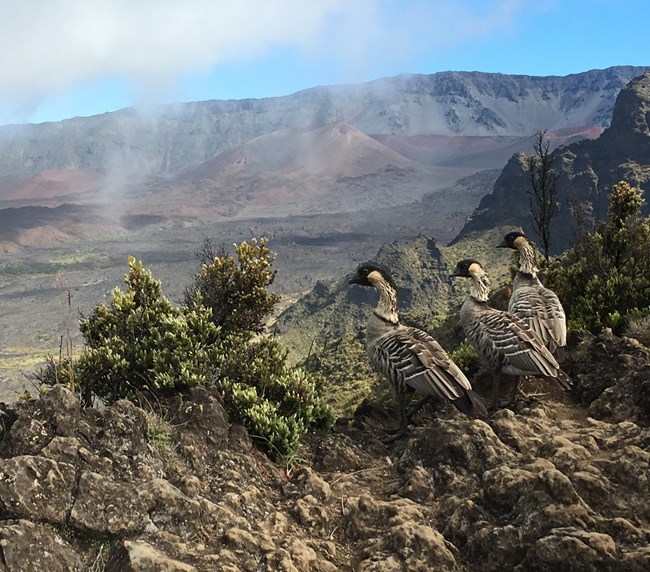Learn about NRCAs
The Natural Resource Condition Assessment (NRCA) Program provides framework, funding, and publishing support to parks to aid in the synthesis and documentation of natural resource conditions. Condition assessment reports are a tool to describe selected park resources, and record a snapshot of their current condition, identify trends, and identify potential or current threats and stressors. Understanding the condition and trend of natural resources is key for parks and NPS planners to appropriately prioritize and allocate stewardship resources.

© JESSE FELTS
Traditional NRCA Report: 2019
The Natural Resource Condition Assessment for the park was published in 2019. National Park Service staff created a comprehensive list of indicators to be evaluated under three main resource topics:
- Life-supporting environment |
||
- Biological integrity |
||
- Landscape condition context |
Current conditions for each of these resources, and for constituent indicators that were considered to be most relevant in characterizing the resources, were evaluated according to all available information. Overall, six of the 16 focal resource indicators were judged to be in good condition, seven were judged to warrant moderate concern, and three were judged to warrant significant concern.
Collectively, this assessment suggests that natural resources at Haleakalā National Park are under considerable strain. Most resource management efforts are currently targeted at the remaining focal resources related to biological integrity (Invasive species and focal species or communities), to prevent those warranting moderate concern to degrade further, and to protect those still in good condition from incipient threats. Haleakalā National Park remains one of the most valuable natural areas in Hawaiʻi, protecting a wide diversity of ecosystems and a large number of threatened and endangered species, and updated information for continued management of its natural resources will be critical. This circumstance is in large part owed to its inclusion within the NPS, and the concerted management efforts that were subsequently undertaken. Major past achievements, such as the fencing and exclusion of feral ungulates from the majority of the park, provide hope that current and future threats may yet be mitigated with sufficient determination, creativity, and collaborative effort.
For other reports and natural resource datasets visit the NPS Data Store.
Source: NPS DataStore Collection 7765 (results presented are a subset). To search for additional information, visit the NPS DataStore.
Last updated: December 16, 2022
